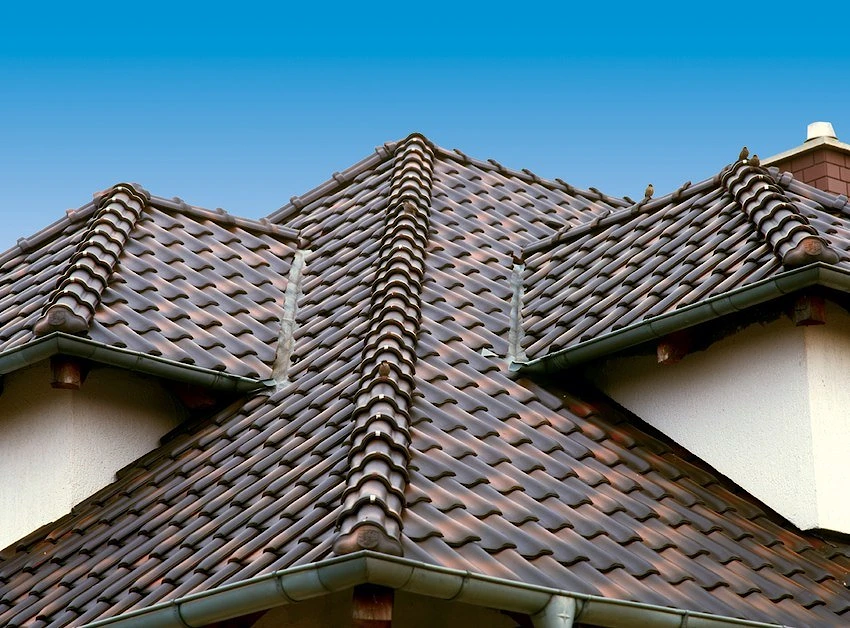When it comes to constructing or renovating a home, one of the most critical decisions homeowners face is choosing the right roofing material. The roof is not just a protective barrier against the elements, but a defining feature that contributes to the overall aesthetic, energy efficiency, and longevity of the house. Whether you are building from the ground up or replacing an old roof, understanding the variety of roofing materials available and how they align with your specific needs is essential. This article will delve into the key roofing materials, offering insights into their pros, cons, and the factors to consider when making your choice.
The Importance of Selecting the Right Roofing Material
A roof’s primary role is to shield your home from weather-related damage—rain, snow, wind, and sun. However, the roof also plays a significant part in the overall appearance of your home. The material you choose can influence the curb appeal, energy efficiency, and even the market value of your property. More importantly, the right roofing material can ensure durability and help protect against the costly repairs that can arise from premature wear or failure.
Selecting the appropriate roofing material requires an understanding of several factors, including climate, budget, aesthetic preferences, and long-term maintenance costs. Let’s take a closer look at some of the most popular roofing materials available today.
1. Asphalt Shingles: The Most Popular Choice
Asphalt shingles are the most widely used roofing material in the United States, and for good reason. They are affordable, versatile, and relatively easy to install. Asphalt shingles come in two main types: fiberglass and organic. Fiberglass shingles are lightweight and resistant to fire, while organic shingles are made from recycled paper and asphalt and tend to be more durable.
Pros:
-
Cost-effective: Asphalt shingles are among the least expensive roofing materials.
-
Variety: Available in a wide range of colors, textures, and styles, asphalt shingles can complement various architectural styles.
-
Durability: They typically last between 15 to 30 years, depending on the quality and climate.
-
Ease of Installation: Asphalt shingles are relatively simple to install, making them a popular choice for both DIYers and professionals.
Cons:
-
Susceptible to Weather: Asphalt shingles are prone to wear from extreme weather, especially in regions with heavy rain, strong winds, or extreme heat.
-
Environmental Impact: Since asphalt shingles are petroleum-based, they are not the most eco-friendly option, though they can be recycled.
2. Metal Roofing: Durability Meets Style
Metal roofing has surged in popularity over the past decade, especially in areas that experience heavy snowfall, rain, or high winds. Metal roofs are available in various forms, including steel, aluminum, copper, and zinc, and can be finished with different coatings for improved durability and aesthetics. Metal roofing is typically more expensive than asphalt shingles, but its longevity and resistance to extreme weather events can make it a worthwhile investment.
Pros:
-
Longevity: Metal roofs can last 50 years or more with minimal maintenance.
-
Weather-resistant: They are highly resistant to wind, fire, and water damage.
-
Energy Efficiency: Metal reflects heat, which can help reduce cooling costs during hot summer months.
-
Sustainability: Many metal roofing materials are made from recycled content and are fully recyclable at the end of their lifespan.
Cons:
-
Higher Initial Cost: Metal roofs are more expensive upfront than asphalt shingles.
-
Noise: Without proper insulation, metal roofing can be noisy during rain or hailstorms.
-
Denting: Certain types of metal roofs, particularly softer materials like aluminum, can be prone to denting from falling branches or heavy impacts.
3. Clay and Concrete Tiles: Timeless Elegance
Clay and concrete tile roofs are often associated with Mediterranean, Spanish, or Southwestern-style homes, but their beauty and durability make them a great choice for any climate. These tiles are known for their ability to withstand harsh weather, including intense sun, heavy rain, and freezing temperatures.
Pros:
-
Longevity: Clay and concrete tiles can last 50 years or more if properly maintained.
-
Fire-resistant: These materials are naturally resistant to fire, making them a good choice for areas prone to wildfires.
-
Insulation: Both clay and concrete tiles provide excellent insulation, helping to regulate the temperature inside the home.
-
Aesthetic Appeal: The natural, rustic appearance of clay and concrete tiles can significantly enhance the curb appeal of your home.
Cons:
-
Heavy Weight: Tile roofing is significantly heavier than other materials, which may require additional structural support to accommodate the weight.
-
Cost: The installation of clay or concrete tiles can be costly, both in terms of materials and labor.
-
Brittleness: Tiles can be easily cracked if walked on or subjected to heavy impacts, requiring occasional repair.
4. Wood Shingles and Shakes: Natural Beauty
Wood shingles and shakes are prized for their natural beauty and rustic charm. Made from cedar, redwood, or pine, wood roofing materials offer a distinct, warm appearance that complements many traditional and contemporary designs. Wood shakes are thicker and more textured than wood shingles, offering a more natural, rough-hewn look.
Pros:
-
Aesthetic Appeal: Wood roofing provides a classic, natural appearance that adds charm and character to any home.
-
Insulation: Wood naturally insulates the home, helping to keep interiors cool in the summer and warm in the winter.
-
Environmental Benefits: Wood is a renewable resource, and many wood roofing options are sustainably harvested.
Cons:
-
Maintenance: Wood roofs require more maintenance than other materials, including regular cleaning and the application of sealants to prevent decay and pests.
-
Fire Risk: Wood is more susceptible to fire than other roofing materials, though fire-retardant treatments are available.
-
Shorter Lifespan: Wood roofs generally last 20 to 40 years, depending on maintenance and climate conditions.
5. Slate Roofing: Timeless Durability
Slate roofing is one of the most durable and long-lasting materials available, known for its elegance and timeless appeal. Made from natural stone, slate tiles are incredibly durable and can last for more than 100 years with proper care. They are a premium roofing option and often used in historic homes or luxury properties.
Pros:
-
Extremely Long-lasting: Slate can last more than 100 years, making it one of the longest-lasting roofing materials available.
-
Fire and Weather-resistant: Slate is highly resistant to fire, rain, snow, and extreme temperatures.
-
Elegant Appearance: Slate offers a sophisticated and high-end appearance, ideal for homes seeking a premium look.
Cons:
-
High Cost: Slate is one of the most expensive roofing materials in terms of both material and installation costs.
-
Heavy Weight: Like tile roofing, slate is heavy and may require additional structural support.
-
Fragility: While durable, slate tiles can crack if subjected to heavy impacts or if walked on improperly.
6. Synthetic Roofing Materials: The Modern Alternative
Synthetic roofing materials, including rubber, plastic, and polymer-based tiles, are newer alternatives that mimic the appearance of more traditional materials like wood, slate, and tile. They offer many of the same benefits but at a lower cost and with improved durability. These materials are also lightweight and easy to install.
Pros:
-
Cost-effective: Synthetic roofing materials are often more affordable than traditional options like slate or tile.
-
Durability: Many synthetic materials are designed to be resistant to weathering, rot, and pests.
-
Eco-friendly: Some synthetic materials are made from recycled materials, making them a more sustainable choice.
Cons:
-
Newer Technology: As relatively new products, synthetic roofing materials may not yet have the long-term track record of more established materials.
-
Aesthetic Limitations: While they mimic the appearance of other materials, some people feel synthetic materials lack the authentic beauty of natural stone or wood.
Conclusion
Choosing the right roofing material for your home requires careful consideration of various factors, from your budget and the climate in your region to the long-term maintenance and aesthetic appeal. Asphalt shingles are an affordable and versatile option for most homes, while metal roofs provide longevity and exceptional weather resistance. Clay and concrete tiles offer a classic, Mediterranean-inspired look, and wood shingles bring natural beauty with a bit more maintenance. Slate is ideal for those seeking the highest durability and elegance, while synthetic materials provide a cost-effective, eco-friendly alternative.
By understanding the pros and cons of each material and evaluating your home’s unique needs, you can make an informed decision that will not only enhance the look of your home but also protect it for years to come. Whether you are replacing an aging roof or installing a new one, the right roofing material will ensure your home is safe, energy-efficient, and stylish.

